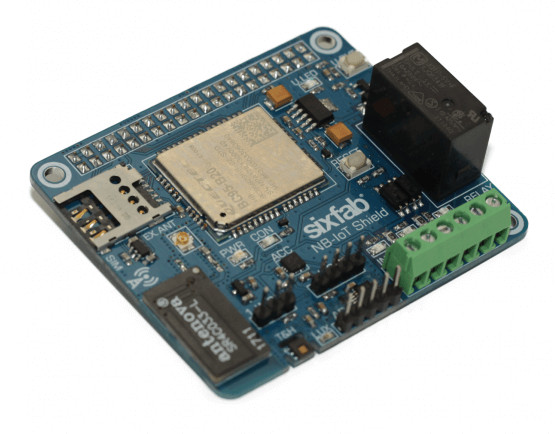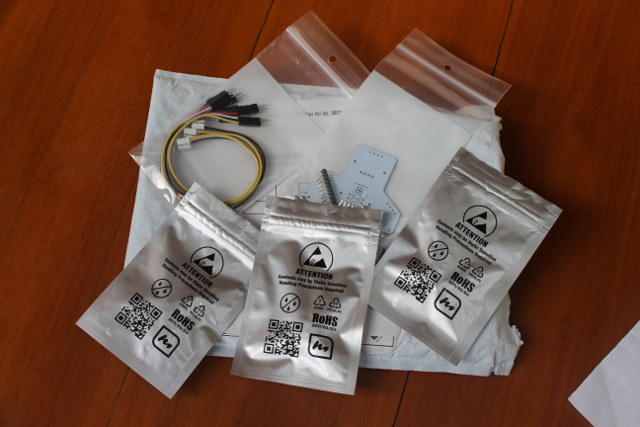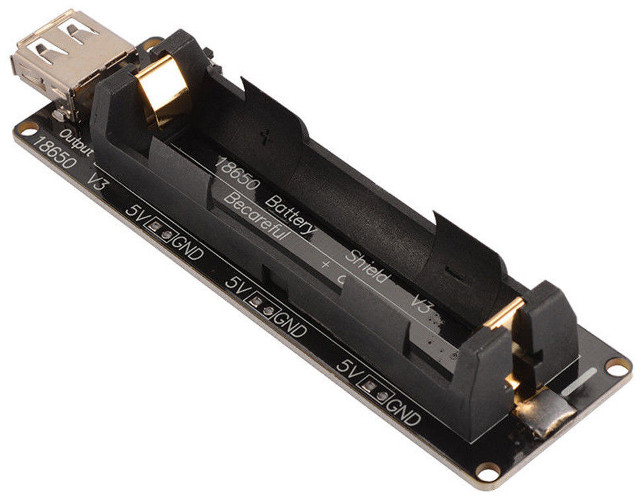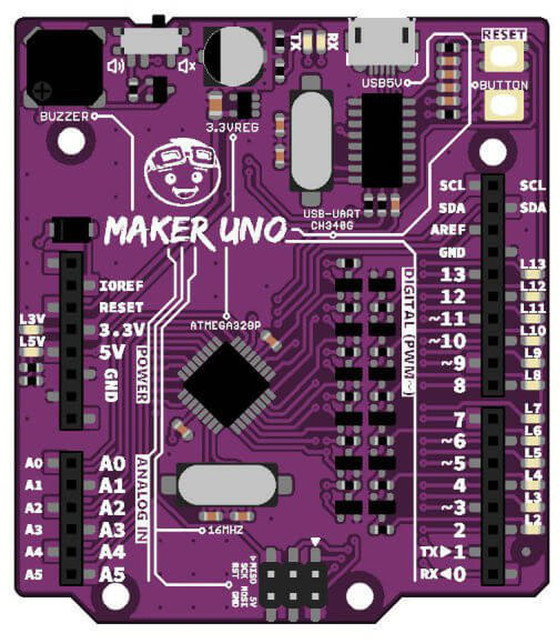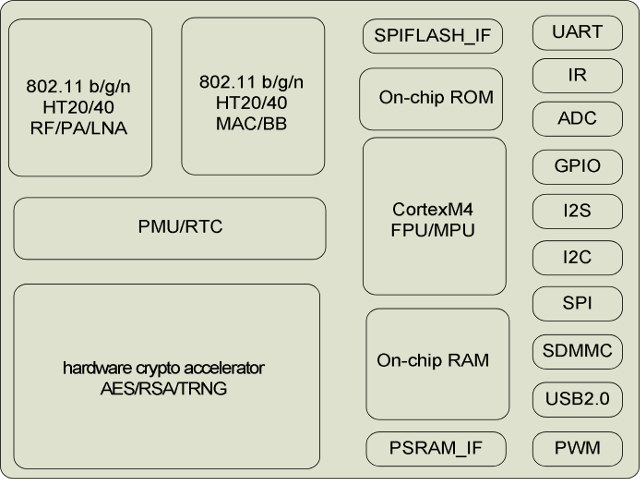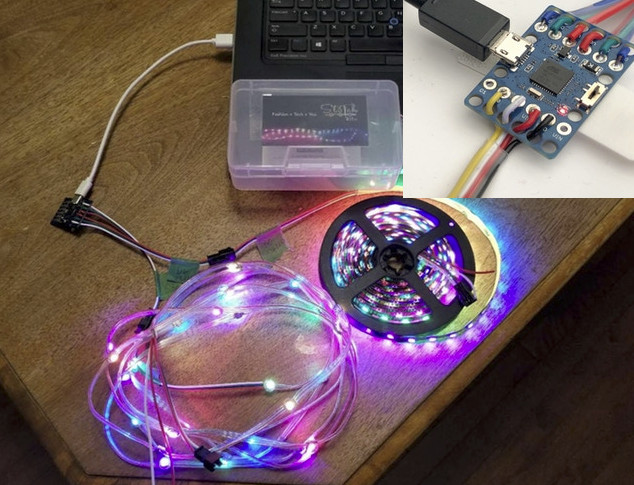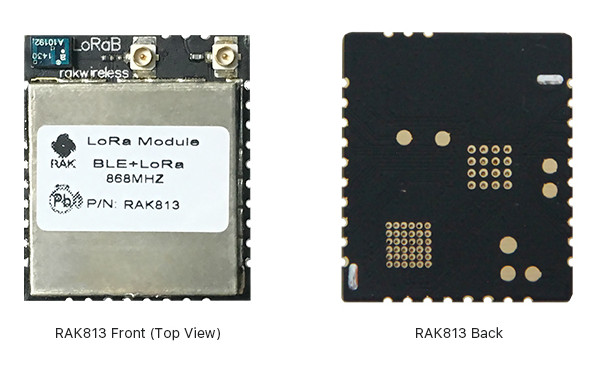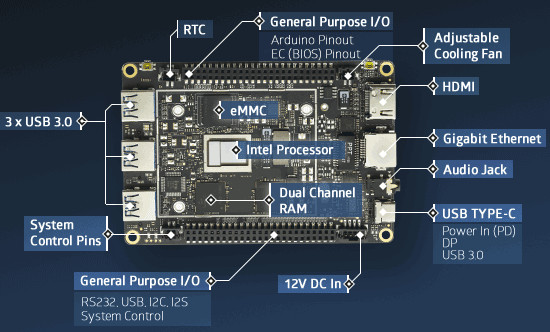SixFab previously introduced a 3G/4G base shield for the Raspberry Pi boards that would take Quectel based mini PCIe card in order to add cellular connectivity to the popular development boards. The company is now back with NB-IoT shields that should better suited to IoT projects with lower hardware and data costs, and support either 40-pin Raspberry Pi boards or Arduino. SixFab Raspberry Pi NB-IoT Shield Specifications & features: Module – Quectel BC95-B20 NB-IoT Module supporting 800MHz frequency (suitable for the European market) Micro SIM card socket, PCB Antenna and u.FL socket for external antenna I/O expansions 4x Channel 12-bit ADC via ADS1015 Relay with optocoupler protection (24V DC, 120-220V AC Switching) 3-pin 1-Wire interface for DS18B20, DHT21, etc… 4-pin I2C interface 3.3V reference voltage Sensors MMA8452Q 3-axis accelerometer HDC1080 temperature sensor (-40 to +125 °C) HDC1080 humidity sensor (0 to 100%) ALS-PT19 ambient light sensor Misc – User button […]
Getting Started with TinyLIDAR Time-of-Flight Sensor on Arduino and Raspberry Pi
TinyLIDAR is an inexpensive and compact board based on STMicro VL53L0X Time-of-Flight (ToF) ranging sensor that allows you to measure distance up to 2 meters using infrared signals, and with up to 60 Hz. Contrary to most other VL53L0X boards, it also includes an STM32L0 micro-controller that takes care of most of the processing, frees up resource on your host board (e.g. Arduino UNO), and should be easier to control thanks to I2C commands. The project was successfully funded on Indiegogo by close to 600 backers, and the company contacted me to provided a sample of the board, which I have now received, and tested with Arduino (Leonardo), and Raspberry Pi (2). TinyLIDAR Unboxing I was expecting a single board, but instead I received a bubble envelop with five small zipped packages. Opening them up revealed three TinyLIDAR boards, the corresponding Grove to jumper cables, and a bracket PCB for […]
$2 USB “18650 Battery Shield” Powers Arduino, ESP32, and Other Low Power Boards with a 18650 Battery
If you’re looking for battery power for one of your projects, you may consider a “18650 battery shield” – going for just above $2 on Aliexpress or eBay – for powering Arduino boards, Espressif ESP8266 or ESP32 boards, or any board that can be powered by 5V up to 2A via USB or headers, or by 3V up to 1A via headers. Specifications listed on eBay/Aliexpress: Power Input – 5 to 8V via micro USB port up to 0.5A charging Power Output 5V via Type A USB port 3V up to 1A via 3x 2-pin header 5V up to 2A via 3x 2-pin headers Misc – 1 switch control USB output, LED for charging status (green = full, red = charging) Battery protection (Over-charge or Over-discharge) Dimensions – 9.8 x 2.9 cm You’ll need to add your own 18650 battery, and be careful about polarity while installing it, since putting […]
$6 Maker UNO Arduino UNO Clone Comes with Micro USB Power, I/O LEDs, and a Buzzer
Arduino UNO is one of the older Arduino boards, but also one of the most popular, and there are already many clones, which you can buy for as low as $3 shipped. But Malaysian based Cytron Technologies has decided to make their own Arduino UNO Compatible board, designed specially for students to learn coding and microcontroller, that brings some tweaks to the original design. First, they’ve done away with the power jack, and instead went with a more convenient micro USB port for power. They also added an LED for each digital I/O, so students can easily see I/O activity, and finally included a piezo buzzer to play sounds or melodies, as well as a push button. Maker UNO specifications with differences highlighted in bold: MCU – Microchip Atmel ATMega328P AVR micro-controller @ 16 MHz with 32KB flash, 2KB SRAM, 1KB EEPROM I/Os 14x digital I/Os including 6x PWM 6x […]
$1 RDA5981 WiFi IoT Arm Cortex-M4 SoC is Designed for Smart Home Devices, Smart Speakers
RDA Microelectronics processors are found in a few cheap smart and not-so-smart phones, as well as the even cheaper Orange Pi i96 board. But the company does not only design cellular chips, but their portfolio also includes solutions for the Internet of Things and TV & radio tuners. RDA5981 is a WiFi IoT chip specifically designed for smart home & audio application, such as smart speakers, and it’s found in devices running Baidu DuerOS, the Chinese equivalent of Amazon Alexa or Google Assistant. The company explains it can be widely used in televisions, set-top boxes, smart appliances, wireless monitors, and other products. RDA5981 A/B/C processor specifications: CPU – Arm Cortex-M4 @ up to 160 MHz with integrated MPU and mbed uvisor System Memory – Up to 448 KB SRAM for network stack and application, external PSRAM interface Storage – Up to 32Mbit SPI flash Connectivity WiFi 2.4 Ghz 802.11b/g/n WiFi […]
Arduino & Grove Compatible StitchKit Mixes Fashion & Technology (Crowdfunding)
I don’t really get fashion. For example, I don’t understand why somebody would spend $100 on a pair of “Jean-Patrick Coultier” trousers, while you could get pretty much the same for about $20. My clothes just need to keep me warm and comfortable. And now I can see people starting to attach blinking lights to their clothes. Heresy!!! But others have a different opinions, and people interested in fashion, may not be interested in electronics, but still want those shiny things on their clothes. StitchKit is an Arduino compatible board that can also take Seeed Studio Grove module designed for those kids, teachers, designers, and cosplayers who want to easily add LEDs and other electronics to clothes or other wearable pieces without having to dig into the technical details. The system works around MakeFashion board powered by an Arduino compatible Microchip / Atmel ATMega32U4 AVR micro-controller with two rows of […]
RAK Wireless Introduces LoRa + BLE Module, LoRa GPS Tracker, and NB-IoT/eMTC Arduino Shield
We’ve previously covered several products from RAK Wireless, including RAK WisCam Arduino compatible Linux camera, RAK CREATOR Pro Ameba RTL8711AM WiFi IoT board, and WisCore modular development kit for application leveraging voice assistants such as Amazon Alexa. AFAIK, the company had not released any new products since their RAK831 LoRa gateway module launched last summer, but they just contact me with the release of three new wireless products, namely RAK813 BLE + LoRa module, RAK811 LoRa tracker board, and WisLTE NB-IoT/eMTC/eGPRS Arduino shield. RAK813 BLE + LoRa module & Development Board Main features and specifications: Connectivity LoraWAN via Semtech SX127x (LoRa) chipset Frequency Ranges 433MHz, 470MHz FCC Frequency range 902~928MHz CE Frequency range 863~870MHz MIC Frequency range 920~928MHz KCC Frequency range 920~923MHz Receiver Sensitivity: LoRa down to -146 dBm TX Power – adjustable up to +14 dBm, max PA boost up to 20dbm Range – Up to 15 km in rural […]
LattePanda Alpha/Delta Kaby Lake & Gemini Lake Development Boards Support Windows 10 Pro or Linux (Crowdfunding)
LattePanda development board based on Intel Atom x5-Z8300 “Cherry Trail” processor was launched nearly exactly two years ago on Kickstarter. The board also included an Atmel MCU for Arduino compatibility, and contrary to most development boards on the market, focused on Windows 10 support instead of Linux. The crowdfunding campaign was very successful having raised over 440,000 GBP from around 4,000 backers, and now you an still buy the board and accessories on DF Robot or Amazon. The company is now back with not only one, but two new LattePanda “hackable computers”, namely LattePanda Alpha powered by an Intel Core m3-7Y30 dual core “Kaby Lake” processor, and LattePanda Delta based on Intel Celeron N4100 quad core Gemini Lake processor. This time beside offering Windows 10 Pro, they are also committed to support Linux. Beside processor, memory capacity, and storage options, LattePanda Alpha/Delta boards share most of the same specifications: SoC […]


